This equilibrium curing guide will cover everything I’ve learned and know in a few decades of studying meat curing.
It’s the primary method I use due to the consistency and flexibility it can provide in curing meat.
Guide to Equilibrium Curing
The beauty of equilibrium curing with either wet brine or dry cure is consistent salt flavor levels. If you use a minimum percentage of salt and follow the process, you will create solid outcomes. You will consistently have great results if you have cured the meat long enough.
What is Equilibrium Curing?
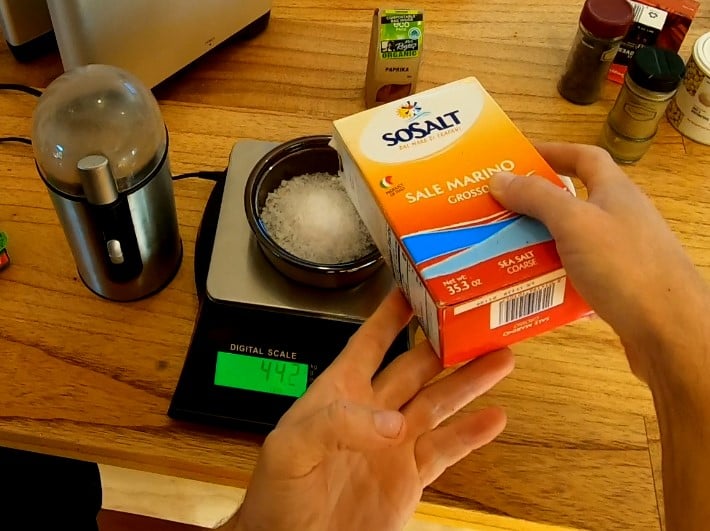
Equilibrium curing – using a percentage of salt to the weight of the meat. (You can also use a percentage of the weight to work out the volume of water if you are wet brining.)
Ie.
2.5% sea salt = 1,000 grams meat
0.025 x 1000 = 25 grams of sea salt
Pretty simple! Using the metric system with grams and kilograms is much easier than using the Imperial system.
Be careful when calculating decimals; that’s also why the calc link is good to use.
How is Equilibrium Curing Meat Different from Salt Box Excess?
The old method of saltbox or saturation involves covering the meat entirely with salt. This method uses a lot of salt.
I still use this method for large meat muscles or making salt pork.
Things like salt beef, fish & salt pork fall into this category.
I like to use 2% salt at minimum for dry curing whole muscle meat like salumi. This often includes the 0.25% pink curing salt 1 or 2.
I think the saturation methods of salt curing make a lot of sense if you’re using the whole leg for something like prosciutto or multiple 20-lb slabs of pork belly for bacon, for instance—I’m talking huge muscles.
Why Use It
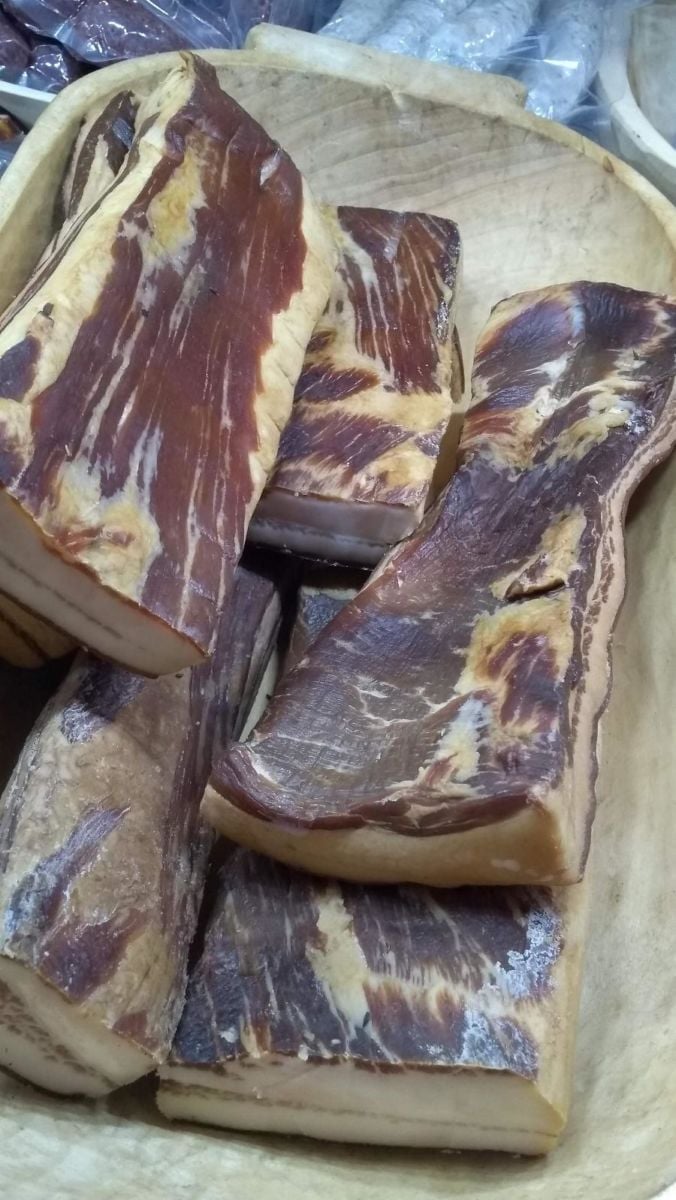
As mentioned above, and as you probably already know, it’s more efficient to use less salt.
Equipment needed: precise, accurate scales to measure the amount. I’m talking about one or, ideally, two decimal places (i.e., 0. x or 0. xx). This is also because so many recipes in almost all my cooking books have a volume amount.
Like 1 cup of this and three tablespoons of that.
For instance, all the different brands and types of salt take up different amounts of volume and, therefore, can weigh different amounts. Using volume for consistency in the kitchen for many recipes is a far superior way, but cups and teaspoons are still the generally accepted norm.
Curing Time
Length of Time to Cure
Factors that influence include:
The amount of fat present
Temperature
Salt Concentration
My general rule is one week per 2 inches (50mm) of the meat’s thickness for Equilibrium Curing.
But if you have genuinely removed all the air/oxygen from the curing bag, then you could leave a piece of meat in the fridge for an additional 1-2 weeks without affecting it.
Equilibrium Curing – The curing will wait for you, not the other way around, like with traditional saturation or excess salt methods.
My equilibrium cure calculator is located at the top of each web page.
How long you leave something in the cure varies, but it’s more forgiving with equilibrium curing.
I did quite a small chunk of pork belly to make cold-smoked bacon last week using equilibrium curing.
One week is enough for 2 pounds/1000 grams of pork belly.
But I also like to add a bit of weight; this time, it was an antique clothes iron I found lying around. This helps push the cure into the meat; I often use cans of food.
What Can it be Used For
Equilibrium curing is primarily used to make dry-cured meat of the whole muscle variety.
Though it has applications for cooking, equilibrium measurements can also lead to more accurate outcomes for any food preparation—commercially, often more than volume-based measurements.
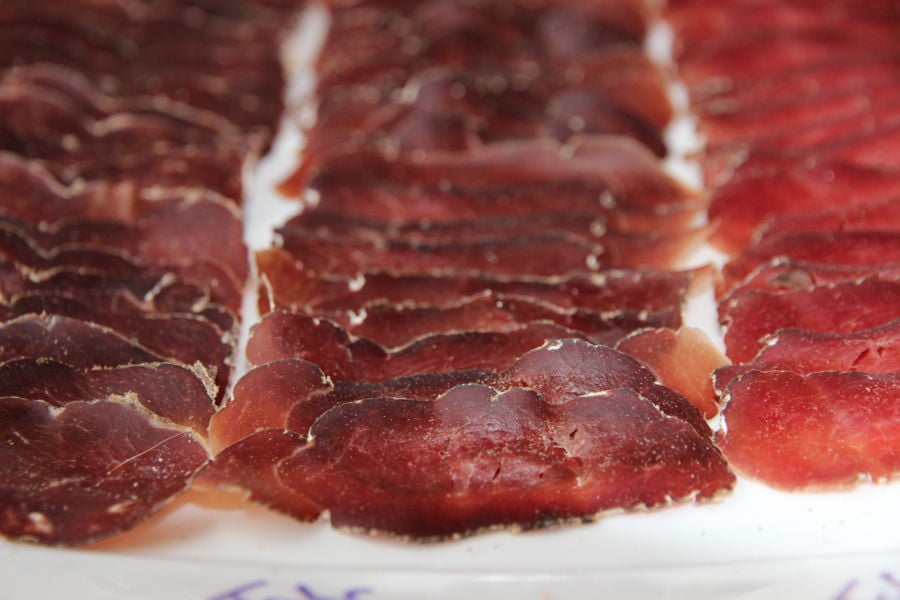
Dry & Wet Equilibrium Curing
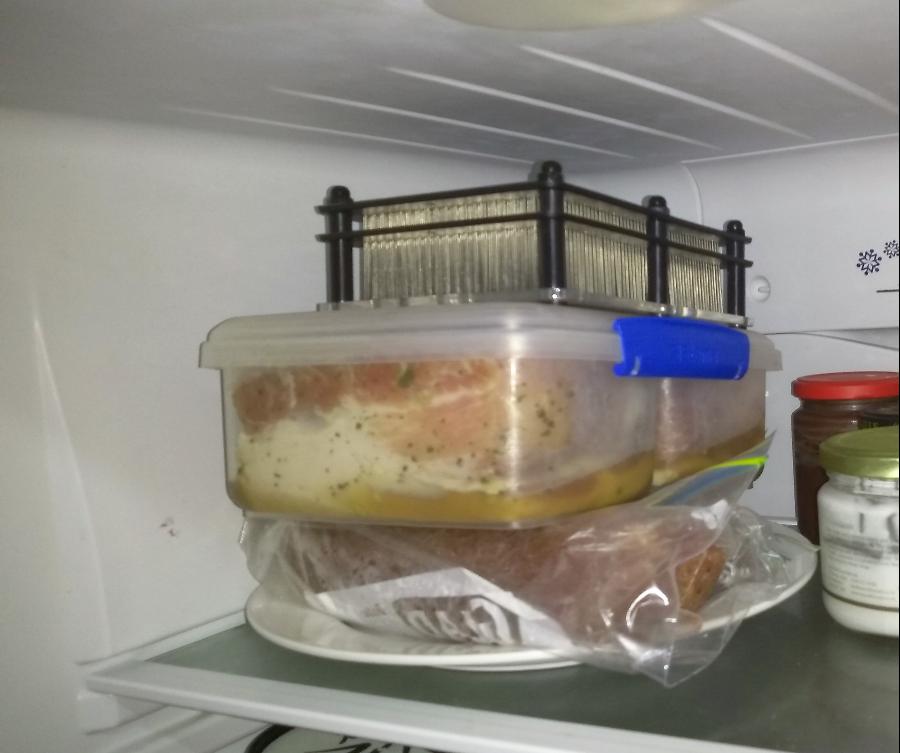
From the community and the groups I’m part of, dry curing using equilibrium curing seems much more popular than wet brine equilibrium curing. Whenever you add brining to the recipes, you also dilute flavor.
My equilibrium curing calculator can calculate both approaches.
Dry curing creates a deeper and more pronounced taste from spices and aromatics. When using wet brining, everything seems a little bit smoother and subtler.
Process
Weigh the meat
Calculate the amount of salt and spices for the cure (and nitrates if applicable)
Calculate the water for the brine (if applicable)
Use accurate scales to measure out all the salt-cure ingredients
Use a bowl or container to massage and rub the cure mix thoroughly into the meat (no leftover cure, all added to the bag)
Place the meat in a bag with all the cure and remove air/oxygen
Place in the fridge or at a similar temperature.
- Apply weight to the bag for quick penetration if desired
Salt
Sea salt comes in many forms and sizes; many brands are on the market.
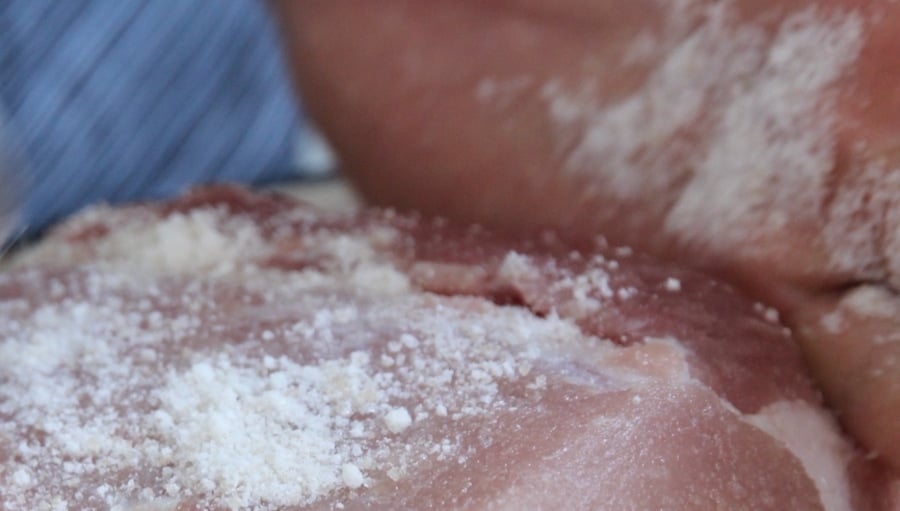
But when it comes to curing meat, you always want salt that doesn’t have additives. So, ideally, iodized salt or something like an anti-caking agent, which is pretty standard, should be avoided.
Rock salt verse fine sea salt measured by the cup will be a completely different weight, therefore, saltiness will vary greatly.
I use a spice grinder, like one of these (electric or manual) – it makes quick work of any salt or spice mix – and a kind of powder I find preferable for equilibrium curing my meat.
Essential Equipment for Equilibrium Curing
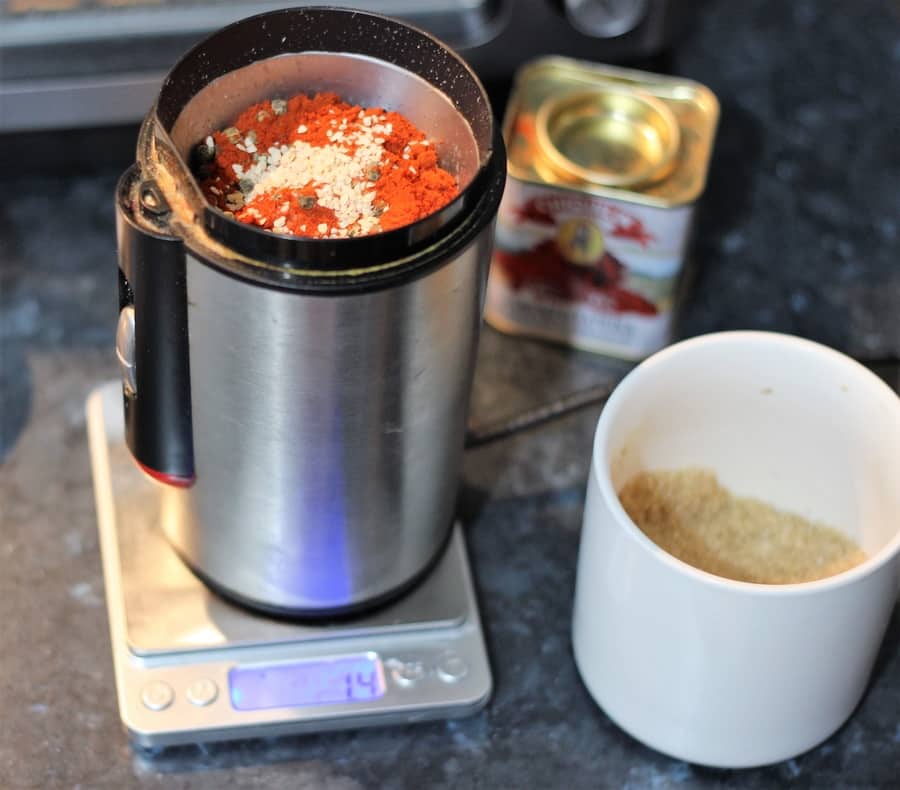
Digital Measuring Scales
Getting the degree of accuracy is the most important thing.
My partner bakes all sorts, especially sourdough, and her scales generally has an accuracy of + or – 2 grams, which is unacceptable for equilibrium meat curing.
Spice Grinder or Mortar & Pestle
TIP – If you have a small grinder, place it on your scales and just TARE Zero In as you add the ingredients.
You can get away with a mortar and pestle for crushing/mixing the cure, just a little arm workout needed. It takes much longer to get a finer salt and spice mix.
For many meat curing projects, a finer powder, which can be done in seconds with an electric spice (coffee) grinder, makes quick work of the job.
It is best to dedicate a spice grinder to meat curing; coffee beans can linger in the grinder!
The finer spice mix allows you to spread it across more areas of the meat. Sometimes, it may be perceived that you don’t have enough cure volume when equilibrium curing. You have to trust the calculations you have performed.
You cover all areas across the meat into every crevice you can find.
Container or Bowl
This seems pretty basic, but getting the right size container or bowl for your piece of meat helps.
My favorite method is to use a stainless steel mixing bowl, which is somewhat rounded. This means I can use the meat to wipe up every last bit of equilibrium cure from the bowl.
The example below illustrates this.
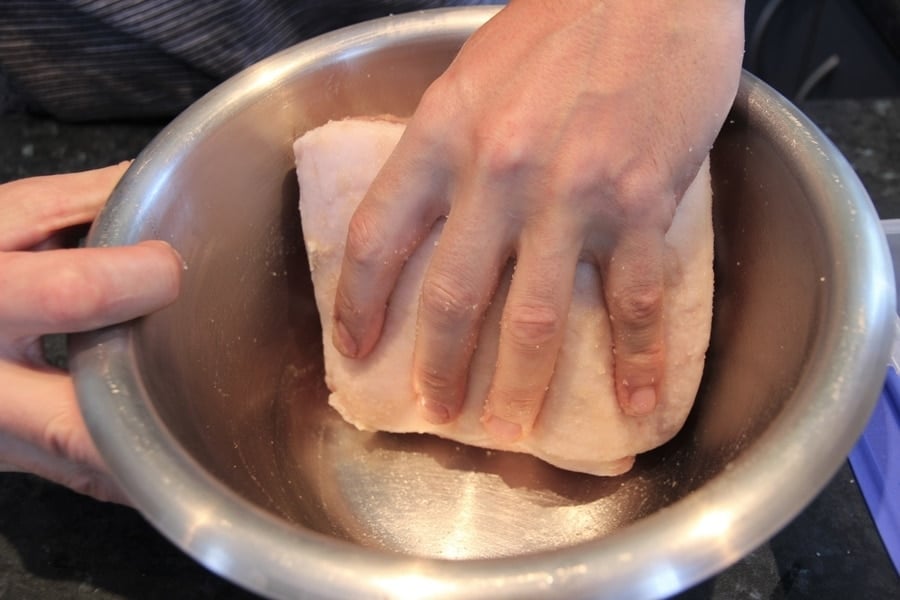
Airtight Bag
Equilibrium-curing can be done in a Ziploc bag, and as much air/oxygen as possible. Another standard method is to use a vacuum sealer/pak.
Another choice is to grade reusable silicone bags, which can also remove the air.
Spices & Flavoring Equilibrium Curing
This is probably the most exciting part of meat curing (category article link): the sweet smell of bay (leaf) laurel, the savory flavors of juniper berries, or maybe the various paprika of the world, along with delightful hints of ham. They can create entirely new flavor angles.
FAQs
What percentage of salt is needed for equilibrium curing?
For equilibrium curing, you typically need 2% to 3% salt based on the meat’s weight, ensuring proper preservation without excessive saltiness. This method allows for precise salt absorption, preventing over-curing while maintaining consistency in flavor and texture.
How did they cure meat in the old days?
In the old days, meat was cured using dry salt, brine, smoke, and air drying to preserve it without refrigeration. Salt was the primary method, drawing out moisture to prevent spoilage, while smoking added antibacterial properties and flavor. In colder climates, meats like prosciutto or bresaola were often air-dried, while warmer regions used heavy salting or fermentation techniques to ensure longevity.
What Can Equilibrium Curing be Used for?
Equilibrium curing is used for dry-cured meats, charcuterie, and certain brined products, allowing precise salt absorption for controlled preservation. It’s ideal for whole muscle cuts like coppa, bresaola, pancetta, and duck prosciutto, as well as brined items like bacon and pastrami, ensuring consistent flavor and texture without over-salting.
Please feel free to comment; I am always interested in anyone’s thoughts.

Tom Mueller
For decades, immersed in studying, working, learning, and teaching the craft of meat curing, sharing the passion and showcasing the world of charcuterie and smoked meat. Read More
